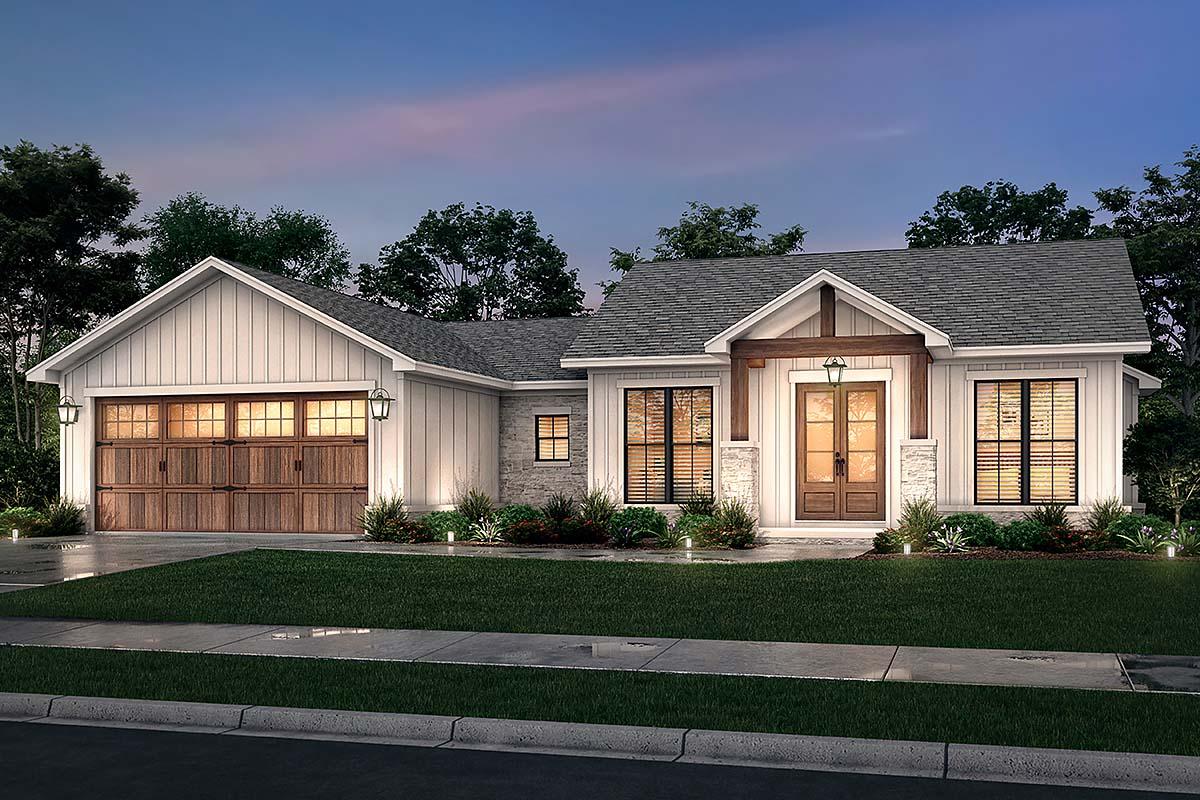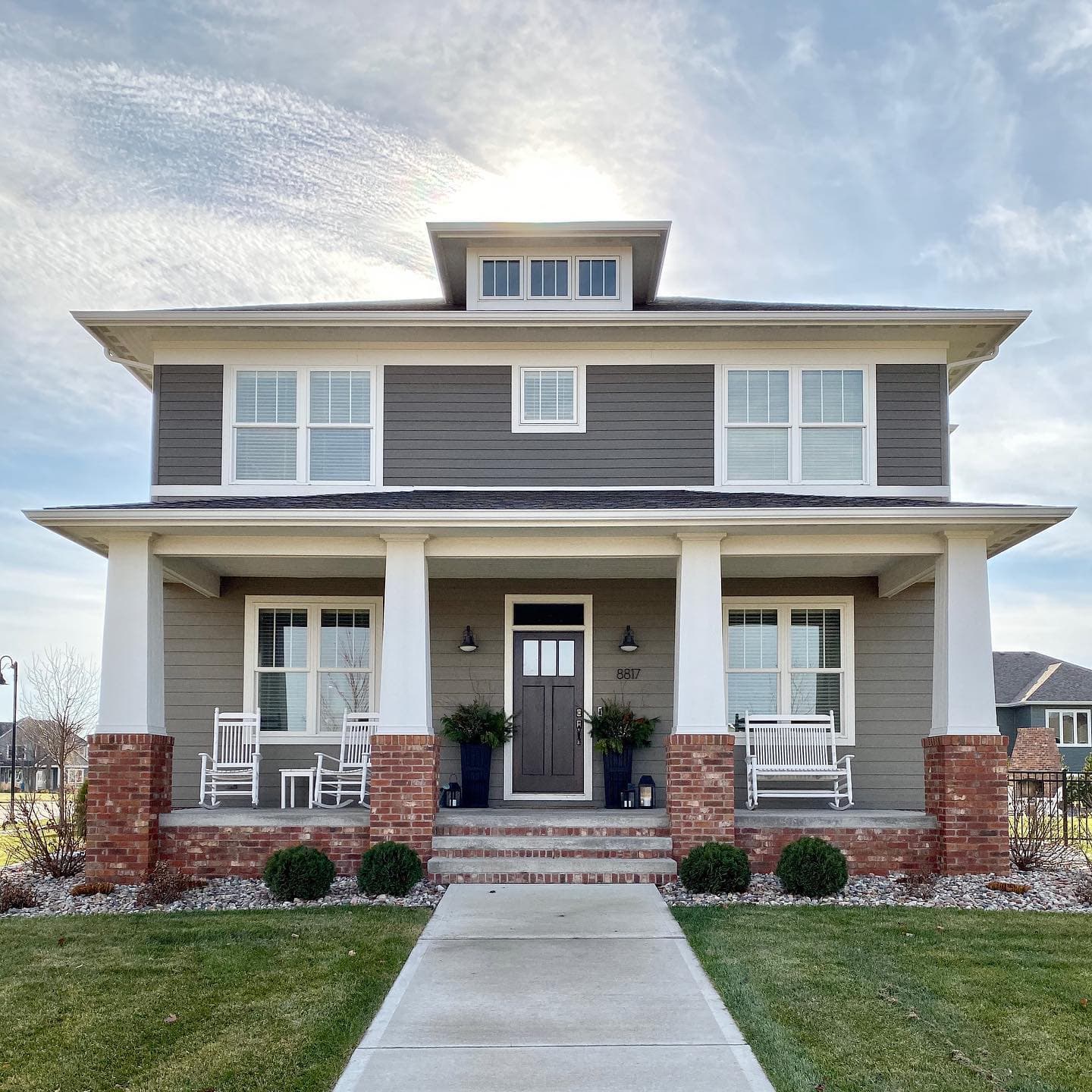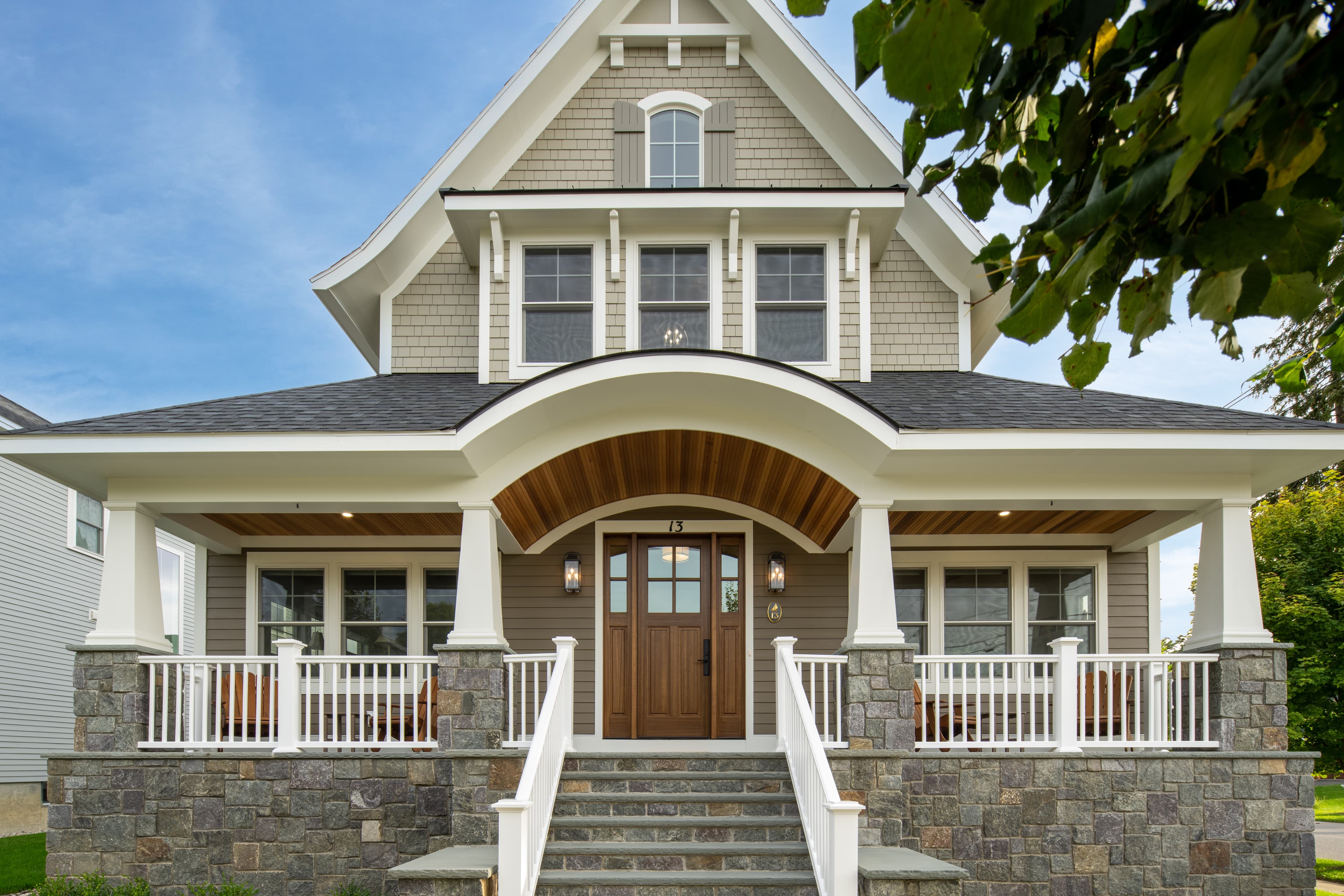The Function of Arts & & Crafts Architects in Elevating Architectural Solutions in Residential Design
Arts and Crafts architects considerably influence household design via their commitment to craftsmanship and sustainability. They prioritize handmade information and all-natural products, which improve both aesthetics and area identification. By including clients in the layout procedure, these architects develop one-of-a-kind space that resonate with personal preferences. This strategy questions regarding the future trajectory of domestic architecture and its prospective effect on area characteristics. craftsman style house. What lies in advance for this classic design approach?

The Concepts of Arts and Crafts Architecture
The essence of Arts and Crafts architecture hinges on its commitment to craftsmanship and simplicity. This architectural motion emerged in the late 19th century as a feedback to industrialization, stressing the value of handmade information and all-natural materials. The concepts of Arts and Crafts architecture prioritize functionality and harmony with the environment. Structures generally feature low-pitched roof coverings, wide eaves, and subjected rafters, advertising a sense of unity with nature.
Artisans played a significant duty in this design, frequently incorporating attractive elements like tarnished glass, tiles, and woodwork, which reflect regional craftsmanship. The color combination often tends to be earthy and subdued, enabling structures to blend flawlessly into their environments. Furthermore, the design urges open layout and common spaces, cultivating a feeling of togetherness. Generally, the principles of Arts and Crafts architecture celebrate the appeal of simplicity and the value of human link to both nature and community.

Lasting Practices in Residential Design
While the need for eco liable living continues to expand, sustainable techniques in domestic design have gained substantial grip among architects and home owners alike. Architects are increasingly integrating energy-efficient modern technologies and sustainable materials right into their styles, aiming to reduce carbon footprints and boost power preservation. Strategies such as easy solar style, environment-friendly roofing systems, and rain harvesting systems are ending up being typical elements of modern domestic architecture.
The choice of in your area sourced products minimizes transportation exhausts and supports regional economic climates. Focus on natural light and ventilation not only enhances interior air quality however additionally reduces reliance on man-made lights and climate control systems. These sustainable practices show a dedication to maintaining the setting while providing house owners with comfy, efficient living rooms. As awareness of environmental problems grows, the combination of sustainability in property layout is positioned to come to be a specifying feature of modern architecture, led by the concepts established by Arts and Crafts architects.
Personalization and Customization in Home Style
Personalization and customization in home style have become essential patterns in reaction to the growing wish for distinct living atmospheres that show individual tastes and lifestyles. Homeowners increasingly look our website for to customize areas that resonate with their personal identities, bring about an extra purposeful connection with their space. craftsman style house. This motion encourages architects to engage clients in the layout process, cultivating cooperation that ensures the final result embodies the homeowner's vision
Aspects such as bespoke layouts, personalized materials, and customized finishes enable for a varied series of expressions in residential layout. Arts and Crafts architects play a critical function in this advancement, emphasizing workmanship and quality. Their concentrate on incorporating imaginative aspects with capability guarantees that each home is not only cosmetically pleasing yet additionally distinctly matched to the citizens' requirements. Consequently, this focus on personalization boosts the general residential experience, developing areas that are both individual and enduring.

The Influence of Arts and Crafts Architects on Community Visual Appeals
As areas progress, the influence of Arts and Crafts architects greatly forms their aesthetic landscape. By stressing handcrafted information, natural materials, and standard construction methods, these architects create homes that resonate with their environments. Their styles usually include regional flora, appearances, and colors, cultivating a sense of consistency between constructed environments and nature.
In addition, the Arts and Crafts movement promotes area identification with architectural continuity. By urging property owners to take on similar style concepts, neighborhoods establish a natural character that improves aesthetic allure. see this here This architectural uniformity not just enriches the aesthetic experience however also imparts a feeling of satisfaction among locals.
The focus on sustainability and craftsmanship in Arts and Crafts architecture lines up with contemporary worths, making these layouts relevant in contemporary settings. Ultimately, Arts and Crafts architects contribute significantly to the total beauty and social stability of communities, leaving an enduring influence on their visual heritage.

Future Patterns in Arts and Crafts Architecture
With an increasing focus on sustainability and customization, future patterns in Arts and Crafts architecture are poised to have a peek here blend traditional workmanship with modern development - craftsman style house. Architects are likely to focus on eco-friendly products, using recovered wood and all-natural rock to improve the sustainability of domestic designs. The assimilation of wise home innovation will certainly become commonplace, permitting personalized living experiences without jeopardizing aesthetic stability
Additionally, the rebirth of artisanal strategies will certainly promote a renewed gratitude for handcrafted components, such as bespoke kitchen cabinetry and customized tile job. Future styles may additionally show an emphasis on community-oriented rooms, encouraging communication and connection amongst residents. Exterior living areas will certainly gain importance, seamlessly incorporating nature right into the home atmosphere. As Arts and Crafts architecture progresses, it will proceed to recognize its roots while adjusting to modern requirements, developing harmonious areas that mirror individual values and way of livings.
Frequently Asked Concerns
What Motivated the Arts and Crafts Movement in Architecture?
The Arts and Crafts movement in architecture was motivated by a response versus automation, stressing handmade high quality, all-natural products, and a go back to standard workmanship, intending to create unified, practical spaces that commemorated creativity and individuality.
Just how Do Arts and Crafts Architects Collaborate With Clients?
Arts and crafts architects team up with clients via open dialogue, focusing on individual needs and aesthetics. They stress craftsmanship and sustainability, fostering a partnership that incorporates the client's vision with the engineer's proficiency in design and materials.
What Materials Are Generally Made Use Of in Arts and Crafts Houses?
Common materials in Arts and Crafts homes include all-natural timber, rock, and block, stressing craftsmanship and natural appearances. These elements create a warm, inviting environment, mirroring the motion's dedication to quality and simplicity in style.
How Do Arts and Crafts Layouts Boost Indoor Living Rooms?
Arts and Crafts designs improve interior space by promoting all-natural light, open flooring plans, and handcrafted information. These elements cultivate a warm, welcoming atmosphere, motivating a connection between homeowners and their atmospheres via thoughtful, functional appearances.
What Are Some Famous Examples of Arts and Crafts Architecture?
Famous instances of Arts and Crafts architecture include the Gamble Residence, Greene and Greene's masterpiece in California, and the Robie Home by Frank Lloyd Wright. These structures showcase handcrafted information and consistency with nature, defining the movement's essence.